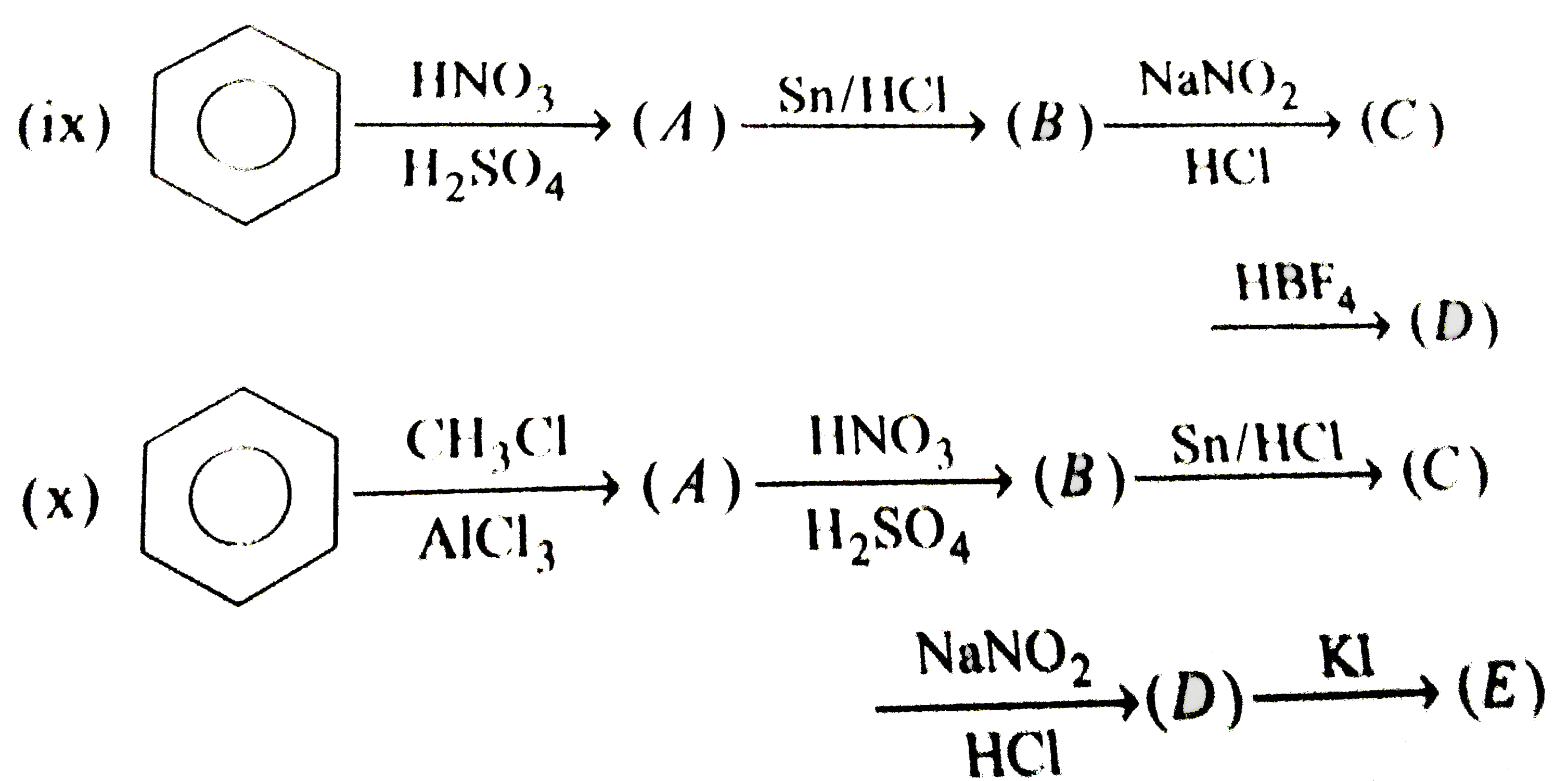CH3CH2CH=CH2NBs−−→Xalc.KOH−−−−−→Y.
The compound Y is
But-2-en-2-ol
But-3-en-1-ol
1,3-Butadience
1,2-Butadiene
The correct Answer is:C
To solve the given problem step by step, we will analyze the reactions involving the compound CH₃CH₂CH=CH₂ (butene) with N-bromosuccinimide (NBS) and alcoholic KOH.
Step 1: Reaction with NBS
1. Identify the starting compound: The starting compound is CH₃CH₂CH=CH₂, which is 1-butene.
2. Understand the role of NBS: N-bromosuccinimide (NBS) is used for allylic bromination. It will brominate the hydrogen atom at the allylic position (the carbon adjacent to the double bond).
3. Identify the allylic position: In 1-butene, the allylic position is the carbon atom next to the double bond. Therefore, the hydrogen on the second carbon (CH₂) will be replaced by a bromine atom.
4. Write the product of the reaction: The product after bromination will be CH₃CHBrCH=CH₂ (3-bromobutene).
Step 2: Reaction with Alcoholic KOH
1. Identify the product from Step 1: The product from the first step is CH₃CHBrCH=CH₂.
2. Understand the role of alcoholic KOH: Alcoholic KOH is a strong base that promotes dehydrohalogenation, which means it will remove a hydrogen atom and a halogen atom (bromine in this case) to form a double bond.
3. Identify the hydrogen and bromine to be removed: In CH₃CHBrCH=CH₂, we can remove the hydrogen from the carbon adjacent to the bromine (the second carbon) and the bromine itself.
4. Write the product of the reaction: After removing H and Br, we will form a new double bond between the second and third carbons, resulting in CH₂=CH-CH=CH₂, which is 1,3-butadiene.
Final Answer
The compound Y is 1,3-butadiene.
---
1. Identify the starting compound: The starting compound is CH₃CH₂CH=CH₂, which is 1-butene.
2. Understand the role of NBS: N-bromosuccinimide (NBS) is used for allylic bromination. It will brominate the hydrogen atom at the allylic position (the carbon adjacent to the double bond).
3. Identify the allylic position: In 1-butene, the allylic position is the carbon atom next to the double bond. Therefore, the hydrogen on the second carbon (CH₂) will be replaced by a bromine atom.
4. Write the product of the reaction: The product after bromination will be CH₃CHBrCH=CH₂ (3-bromobutene).
1. Identify the product from Step 1: The product from the first step is CH₃CHBrCH=CH₂.
2. Understand the role of alcoholic KOH: Alcoholic KOH is a strong base that promotes dehydrohalogenation, which means it will remove a hydrogen atom and a halogen atom (bromine in this case) to form a double bond.
3. Identify the hydrogen and bromine to be removed: In CH₃CHBrCH=CH₂, we can remove the hydrogen from the carbon adjacent to the bromine (the second carbon) and the bromine itself.
4. Write the product of the reaction: After removing H and Br, we will form a new double bond between the second and third carbons, resulting in CH₂=CH-CH=CH₂, which is 1,3-butadiene.
The compound Y is 1,3-butadiene.
Topper's Solved these Questions
Similar Questions
Complete the following by providing (A),(B),(C) and (D) :
(i)CH3CH2CH2OHPBr−−→(A)alc.KOH−−−−−−→Δ
(B)HBr−−→(C)NH3−−→(D)
(ii)CH3CH2CH2Ialc.KOH−−−−−−→Δ(A)H+/H2O−−−−−→
(B)SOCI2−−−→(C)H−−−−−−→LiAIH4(D)
(iii)CH3CHBrCH3alc.KOH−−−−−−→Δ(A)HBr−−−−−−−→Peroxide
(B)Nal−−−−−−→Acetone(C)H−−−−−→Ether
(iv)CH3CH2CH=CH2NBS−−−−−→Light(A)alc.KOH−−−−−−→Δ(B)
HBr−−→(C)
(v)CH3CH2MgBrCH3CHO/H2O−−−−−−−−−→(A)HBr−−→(B)
alc.KOH−−−−−−→Δ(C)
(A)NH3−−→(B)CHCI3+KOH(alc.)−−−−−−−−−−−−−→(C)Na−−−−−−−→C2H5OH
CH3−C∣CH3H−NHCH3

(viii)CH3CH2Br(i)(CH2)6N4−−−−−−−−−−−→(ii)H2O/H+(A)NaOH−−−→(B)
(i)O3−−−−−−−−−−−→(ii)Zn/HOH(A)+(C)conc.NaOH−−−−−−−→(D)
 View Solution
View SolutionCH3CH2CHCI2Aq.KOH−−−−−→?
View Solution
Knowledge Check
- Question 1 - Select One
CH2=CHCH2CH=CH2NBS−−→A, A is
ACH2=CHC∣BrHCH=CH2BCH2=CHCH=CHCH2BrCCH2=CHCH2CH=CHBrDCH2=CHCH2C∣Br=CH2 - Question 2 - Select One
Consider the reaction CH3CH2CH2OHPCl5−−→Aalc−−→KOHB. The compound 'B' is
ApropaneBpropeneCpropyneDpropanal - Question 3 - Select One
CH3CH2CH2OHPCl5−−→Xalc.KOH−−−−−→Y, where Y is _________.
ApropaneBpropanolCpropeneDpropyne
Complete the following reactions:
CH3CH2CH2OHSOCl2−−−→?alc.KOH−−−−−→?HBr−−→?aq.KOH−−−−→View SolutionCH3CH2COOHCl2/Fe−−−−→XKOH(alc)−−−−−−→Y compound Y is
View SolutionCH3CH2COOHCl2−−→RedP(A)Alc.KOH−−−−−→(B)
What is (B)?View SolutionCH2=CHCH2CH=CH2NBS−−→X( Major ),(X) is :
View SolutionThe compound B formed in the following sequence of reaction
CH3CH2CH2OHPCl5−−→Aalc.KOH−−−−−→B isView Solution

